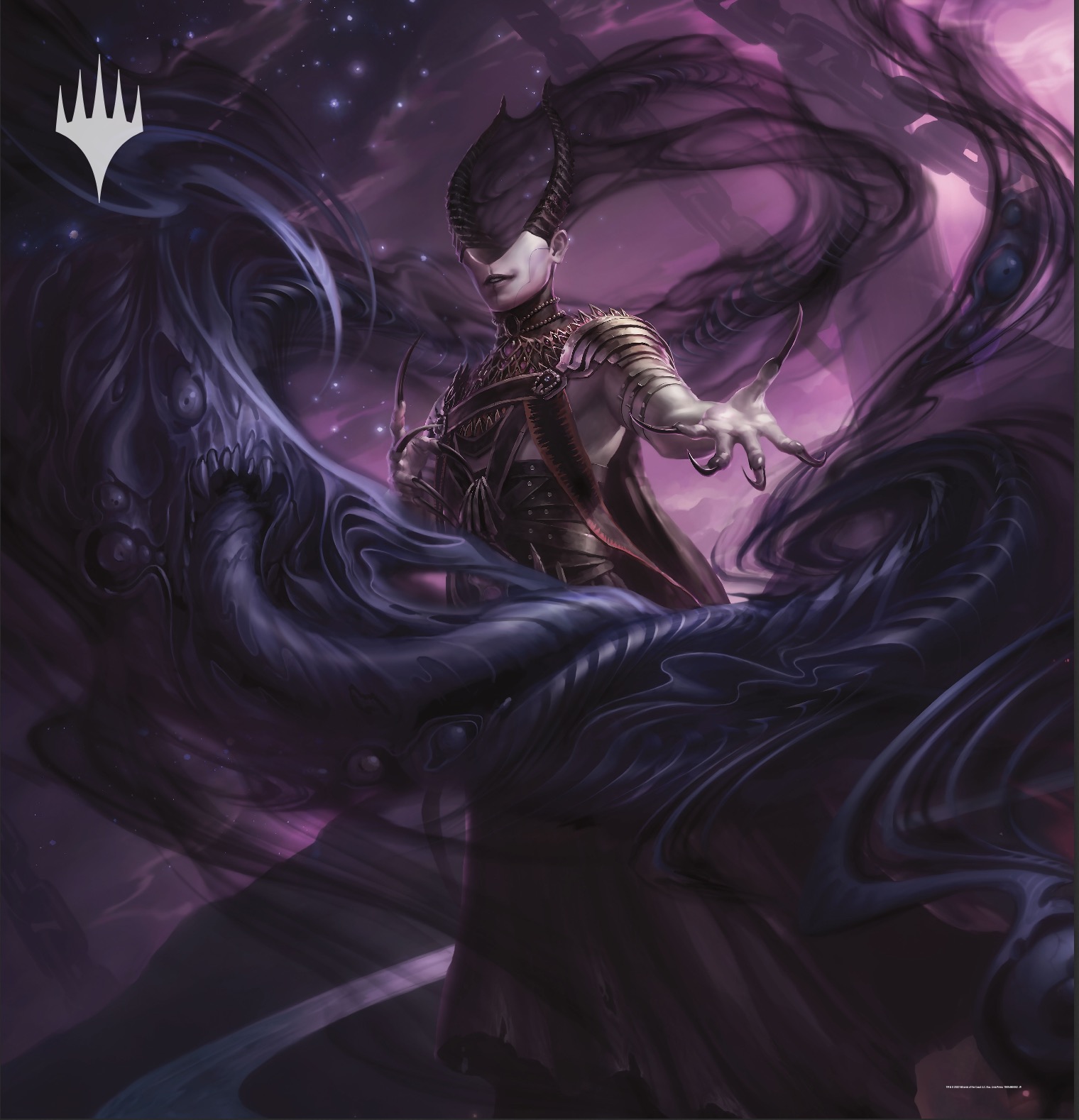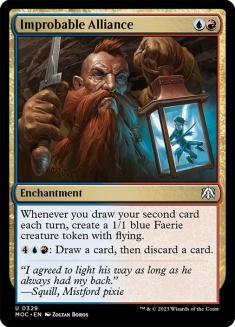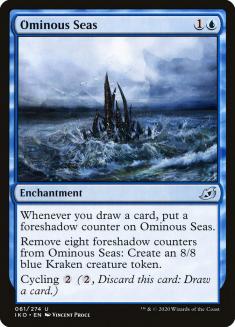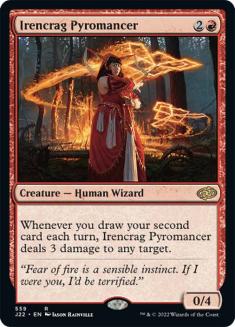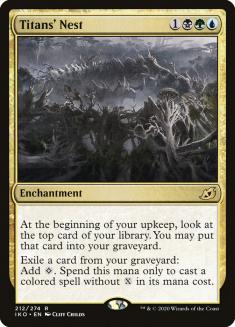When I first went diving into SCG Tour Online results looking for new technology, I had no idea that I was creating a column that I’d be happily returning to over the coming weeks. I thought I was seizing on a moment —a rare explosion of creativity before the metagame settled down.
I was wrong. This Standard metagame has shown a level of depth that we haven’t experienced in an exceptionally long time. Not only are there good secondary and tertiary options, but those decks are also being refined and rising to unexpected heights. Three weeks ago, I picked out Dimir Control as a deck that had some well-hidden potential. Now we’re in a place where the Dimir lists have morphed into something completely different and are among the best decks in the format.
For now, anyway. I’m certain that the churn here is not an endpoint, and that’s half of the reason why I find myself happy to return to this article format. The work of bringing to light the underappreciated archetype feels important again. I’d like to believe that my articles are maybe even playing a tiny part in helping this churn take place. Maybe that’s a little self-aggrandizing, but we’ve all got to find reasons to feel good about the work we do.
The other reason why I continue to do this column is a little more ethereal. There’s something missing in Magic right now. I can’t say exactly what has changed, but accomplishments don’t resonate the same way they did only a couple of years ago. A good tournament finish ended with your picture on the mothership and a flood of congratulations on social media. I rooted for my friends on a weekly basis, glued to coverage and anxious to see them achieve their goals. Now, it feels like results are achieved almost anonymously. Personally, I think far more about archetypes and win percentages, and far less about individuals.
That sucks. I remember how much my first achievements in Magic meant to me. Things as small as appearing in the list of 5-0 decks from Magic Online felt like I was making headway, and the first time my name appeared on this very website was something I proudly shared with my friends and family. It all felt like it mattered. For a multitude of reasons, some of that meaningfulness feels absent these days.
There’s plenty of blame to go around. COVID-19 can take the lion’s share, but the erosion of organized play and an extended period of truly horrific Standards deserve some heat as well. Ultimately though, I’m less concerned about how we got to this place and more interested in thinking about how we get back to the way things were. Part of the responsibility falls on me as a content creator to make sure there’s a forum to celebrate accomplishments. If you step up on the SCG Tour Online with something innovative, I want to be your loudest advocate and let you know that what you’ve done is worth celebrating.
We’re going to have to rebuild our world from the ground up when we return to normalcy. Magic will and should fall lower on the priority list than many other things. But if we want to see our hobby return to greatness when the moment comes, now is the time to consider what has changed and what we can do to get back to the game we once had.
So much of the driving force behind my Magic experience has been the hunt for achievement and, maybe unfortunately, recognition. We were promised the world would know our names. If the powers that be aren’t going to deliver on that promise, I’ll do my best to make up for them.
On to the contenders and pretenders and, as always, all credit to the players for achieving some great results.
Creatures (24)
- 4 Lovestruck Beast
- 4 Beanstalk Giant
- 4 Edgewall Innkeeper
- 4 Bonecrusher Giant
- 4 Brazen Borrower
- 4 Terror of the Peaks
Lands (26)
Spells (13)

There’s nothing quite like getting to start the column with the champion’s list. Noriyuki Mori’s deck isn’t necessarily new. This technology has been circulating for a couple of weeks now, and Genesis Ultimatum has been part of the format from the moment Terror of the Peaks arrived. However, this deck just does it all better than past lists.
Mori’s deck abuses two of the most broken mechanics in the history of Magic in Adventures and companion. It feels like both mechanics (particularly companion) make a big return in this week’s column, and I think I understand why. If we’re getting to a place where the engines have been effectively banned out of the format, then two-for-ones or just extra cards in general start to look promising. While they couldn’t compete with the virtual (or sometimes real) ten-for-ones that engines could produce, single cards matter much more when you can actually run out of resources.
Adventure, even after all this time, feels underappreciated. The creature sides are powerful enough that they would have seen play on their face only a few years ago, and the versatility they provide to this archetype is exactly what this kind of strategy is begging for.
You’re playing a lot of different games very effectively with this new take on Temur. One-card combo wins; Obosh, the Preypiercer-backed aggro draws; massive card advantage engines in Edgewall Innkeeper and The Great Henge; and just enough removal to slow down aggressive decks… it all seems like it’s setting Temur Adventures up for its turn at the top, and it was a particularly brilliant metagame call into the explosion of Mono-Green Food we experienced this week.
Verdict: Contender
Creatures (7)
Planeswalkers (6)
Lands (24)
Spells (43)

We also get to talk about the second-place list, solidifying this event as the most exciting tournament from a metagame development standpoint of this Standard season. As I mentioned, Dimir Control had been gestating just behind the scenes for a couple of weeks now, but I was not at all expecting what came out of the lab. Solemn Simulacrum was being written off as “Boomer Magic” only a few weeks ago, but using it as a way to make Dimir Control a viable Ugin, the Spirit Dragon deck is a stroke of brilliance. The catch-up mechanisms simply weren’t there for this archetype before, but this drastic rebuild has solved that issue.
The cascade of decisions that a focus on Ugin sets off is fascinating. Jwari Disruption is iffy in your average control deck, but with a real haymaker at the top-end you only need some temporary disruption, and it simultaneously makes sure you have plenty of lands to hit the magic number of eight. I think this deck makes just enough concessions to make Yorion, Sky Nomad worth it as a companion. It’s fortunate that the things you want to blink play so well with your macro-strategy in this moment.
This list also deserves as much credit for what it chooses not to do. Playing 80 cards and still having no Shark Typhoon maindeck feels wild, but it just shows how focused on a specific plan this build is. Temur Adventures and Dimir Control both rose to prominence this weekend, but it’s Dimir Control that takes home the title as the best Ugin deck in the format and the ramp deck skips on the card almost entirely. Strange times.
If I had a tournament tomorrow, this is the list I’d register.
Verdict: Contender
Creatures (7)
Planeswalkers (1)
Lands (31)
Spells (41)

This descendant of Sam Black’s work on the novel Mardu Doom Foretold strategy feels like it does a lot of things well, but was set up better for the broader metagame and not the eventual winners’ metagame. This deck feels like it was designed to obliterate the green creature-based decks like Mono-Green Food and Gruul Adventures. However, I’m less excited to jam this into a control deck that can undo all of your work with a single Ugin and a ramp deck that can win off a single Genesis Ultimatum. You can even make a good case that The Great Henge and Edgewall Innkeeper will allow Temur Adventures to grind through approaches like this even without access to the “I win” button of Genesis Ultimatum.
I’m putting this deck aside for now, but I recognize its potential, and like many other decks in this format, it’s apt to have a moment.
Verdict: Pretender
Creatures (4)
Lands (17)
Spells (39)

The engines have arrived! Cycling in its pre-Zendikar Rising form has proven not to be up to the task of dealing with the format. It’s odd, because the deck lost nothing and was more successful in a far more powerful Standard environment. Context is king though, and a return to spot removal, sweepers, and some graveyard hate seemingly doomed the archetype.
Akio Matsuzaki wasn’t ready to give up though, and instead found two powerful enchantments to reorient the gameplan around. Improbable Alliance and Ominous Seas now allow the deck to build threats without investing cards. This opens up the ability to play games more cautiously, and even succeed going long. Irencrag Pyromancers in the sideboard act as a third engine, for those moments when you need to create a removal machine.
I love the addition of Valakut Awakening. If you’ve played old cycling decks, you’ve certainly experienced the moment where you have converted all of your cycling cards into lands and have run out of things to do. The explosive Ominous Seas draws this card unlocks are another huge get.
I’m concerned about how these decks account for Ugin with toned down aggression, but both the sideboard and maindeck provide some clues with way more access to countermagic than is typical out of cycling lists. I think this deck is on to something, and while it feels like the numbers may need some sorting out, I wouldn’t be surprised to see builds like this slowly climbing in representation.
Verdict: Soon to Be a Contender
Creatures (33)
- 2 Scavenging Ooze
- 4 Lovestruck Beast
- 3 Faerie Guidemother
- 2 Questing Beast
- 4 Giant Killer
- 2 Ardenvale Tactician
- 4 Edgewall Innkeeper
- 4 Shepherd of the Flock
- 4 Skyclave Apparition
- 4 Kazandu Mammoth
Lands (7)
Spells (20)

Moving to our Satellite lists, we’re still out here trying to make Selesnya Mediums happen. I too have felt the pull of a Shepherd of the Flock returning my Skyclave Apparition, but this deck is really lacking a good target right now. If there were a bunch of small aggro decks floating around, this would be a fine way to get slightly larger, but that’s not the shape of the current metagame.
I mainly wanted to highlight this deck because this is the first time I remember seeing an Ardenvale Tactician in Standard. It just shows how bad Adventure cards can be and still be worth it on the back on their inherent value proposition and synergy with Edgewall Innkeeper.
Verdict: Pretender
Creatures (13)
- 3 Scavenging Ooze
- 2 Thrashing Brontodon
- 2 Polukranos, Unchained
- 3 Elder Gargaroth
- 3 Yasharn, Implacable Earth
Planeswalkers (2)
Lands (22)
Spells (23)

Early in Zendikar Rising Standard, before Omnath, Locus of Creation had completely taken over, I spent a lot of the early days of the format building decks that looked like this. They are an ancient style of Magic, based mostly around smart removal and disruption choices and powerful midrange threats. I think Yasharn, Implacable Earth is the single most underrated card in all of Magic right now. Even as just a body, it’s extremely playable, and in formats like Modern and Historic where its sacrifice clause matters it’s actually metagame-warping. However, I’m not sure it’s the type of creature that can carry an archetype in Standard, and there’s not much else here that sets this deck apart from existing and discarded options.
I will say that Mythos of Nethroi does a great job accounting for everything, and if midrange is going to exist, it might just be the reason why. The core just doesn’t do enough to pressure Dimir Control or Temur Adventures though and those decks are shaping my lens on the format for this week.
Verdict: Pretender
Planeswalkers (2)
Lands (18)
Spells (40)

A four-mana engine that cheats on mana? Let’s just put this one on the Banned List now alongside Wilderness Reclamation; Fires of Invention; and Omnath, Locus of Creation, and save ourselves the months of pain.
Verdict: Clearly Broken and About to Take Over the Format
Okay, I might be overstating things. You get the point though. All of my complaints about the midrange decks in this article can kind of be summed up by stating “this neither goes big enough or closes games fast enough to compete with Ugin or Genesis Ultimatum.” Titans’ Nest bucks the trend in two ways.
First, the deck does sort of “go off.” It’s not like a pure combo turn, but one Thirst for Meaning leads to a Ray of Revelation leads to a Shark Typhoon and then the game is pretty elementary from that point. Second, the deck is able to leverage Whirlwind Denial for disruption, and can even do so in spots with minimal mana available thanks to Titans’ Nest.
The cost for all of this is a pretty clear weakness to aggressive strategies, and I think Kilmek did a nice job accounting for that weakness in deck construction. However, I’m more inclined to just play this deck at a moment where the aggressive strategies are being naturally kept down by the metagame. And I think that moment might be right now. Swap the Negates and Essence Scatters from the maindeck and sideboard, and beat up on the top dogs this weekend.
Real Verdict: Short-Term Contender
Creatures (28)
- 4 Giant Killer
- 4 Alseid of Life's Bounty
- 2 Lurrus of the Dream-Den
- 4 Seasoned Hallowblade
- 4 Selfless Savior
- 2 Legion Angel
- 4 Skyclave Apparition
- 4 Luminarch Aspirant
Lands (6)
Spells (26)
Sideboard

- Things about this list I love: maindeck Lurrus of the Dream-Den.
- Things I don’t love: the other 73 cards.
Verdict: Pretender
Creatures (4)
Planeswalkers (5)
Lands (21)
Spells (50)
- 4 Plains
- 1 Mountain
- 2 Island
- 4 Negate
- 4 Essence Scatter
- 4 Omen of the Sea
- 4 The Birth of Meletis
- 4 Storm's Wrath
- 4 Omen of the Sun
- 4 Elspeth Conquers Death
- 4 Shark Typhoon
- 4 Transmogrify
- 3 Emeria's Call
- 1 Sea Gate Restoration
- 3 Shatterskull Smashing
Sideboard

This deck highlights a really important point about this Standard format. We’re building a massive backlog of decks that were good for a moment and then promptly disappeared. This deck was around immediately after the Omnath banning and then fell off a cliff. But a rise in decks that were again extremely soft to Dream Trawler called it out of retirement. I’m extremely suspicious of Storm’s Wrath as the sweeper of choice when Mono-Green Food is having a moment, but otherwise I think this was a fine choice against a decent portion of the broader metagame.
My big question is how it lines up against the top tier. I’ll be honest that I’m having a hard time unpacking the Dimir Control matchup on sight alone. You’ve got some aspects of your deck like Shark Typhoon and Negate that play really strong against them, but they also do a good job controlling your Dream Trawlers, and I’m worried they can out card advantage you going long. If I’m wrong about that matchup and it’s actually in your favor, you could sell me on this deck returning to the ranks of contenders. I really think you should be playing Shatter the Sky even if it kills your Dream Trawlers though.
Verdict: Pretender, but I Might Have This One Wrong
Creatures (34)
- 4 Robber of the Rich
- 4 Bonecrusher Giant
- 4 Seasoned Hallowblade
- 4 Selfless Savior
- 4 Skyclave Apparition
- 3 Archpriest of Iona
- 4 Relic Robber
- 4 Luminarch Aspirant
- 3 Fireblade Charger
Lands (5)
Spells (21)

Look, conceptually I really like what this deck is doing. Fireblade Charger has impressed me the small amount I’ve played with it, and making Archpriest of Iona a real threat is bringing something to the table that literally no other deck has — a meaningful one-mana aggressive creature.
However, you just can’t convince me that the mana works for this style of deck. Between your one-drops, Skyclave Apparition, and Embercleave, you just need too many distributions of mana and the Pathways are horrendous for enabling low-land-count decks that look like this. I’ll check back in on Boros Aggro when we get some new lands.
Verdict: Pretender
Creatures (14)
Planeswalkers (9)
Lands (21)
Spells (16)

You can always count on John Roberts, aka JdoubleR2 to bring something unique to the table, and this particular deck is no exception. How good are a bunch of planeswalkers and a pile of removal right now? Does it matter that JdoubleR2 chose the most aggressive planeswalkers available? And that Questing Beast is bringing the beats alongside them?
Again, my instinct is that this deck found a great way to beat up on things like Gruul Adventures. Once an Ugin deck enters the format, all the rules change though. I’m not sure this deck generates enough pressure as it stands now, but maybe you can rebuild around that problem. Something like maindeck Skyclave Shade might just be enough to make the post-Ugin Questing Beast more than your Dimir opponents can overcome. Even if this list isn’t what I’m looking for going forward, I’m excited to get in some games with it and see what it can do.
Verdict: Pretender
I kind of feel like I’m working public relations for Standard these days. I get why people are hesitant to jump back in, but there’s something really great happening in the format at the moment. Individual games aren’t back to the quality of Magic’s best times, but the metagame development has been fascinating to follow and there continues to be lots of room for creativity in deck selection.
It will be interesting to see if the Zendikar Rising Championship throws any new contenders into the ring, or if the metagame finally unlocks its final form. Based on the new top tier, I have no reason to think that format churn is about to stop.

